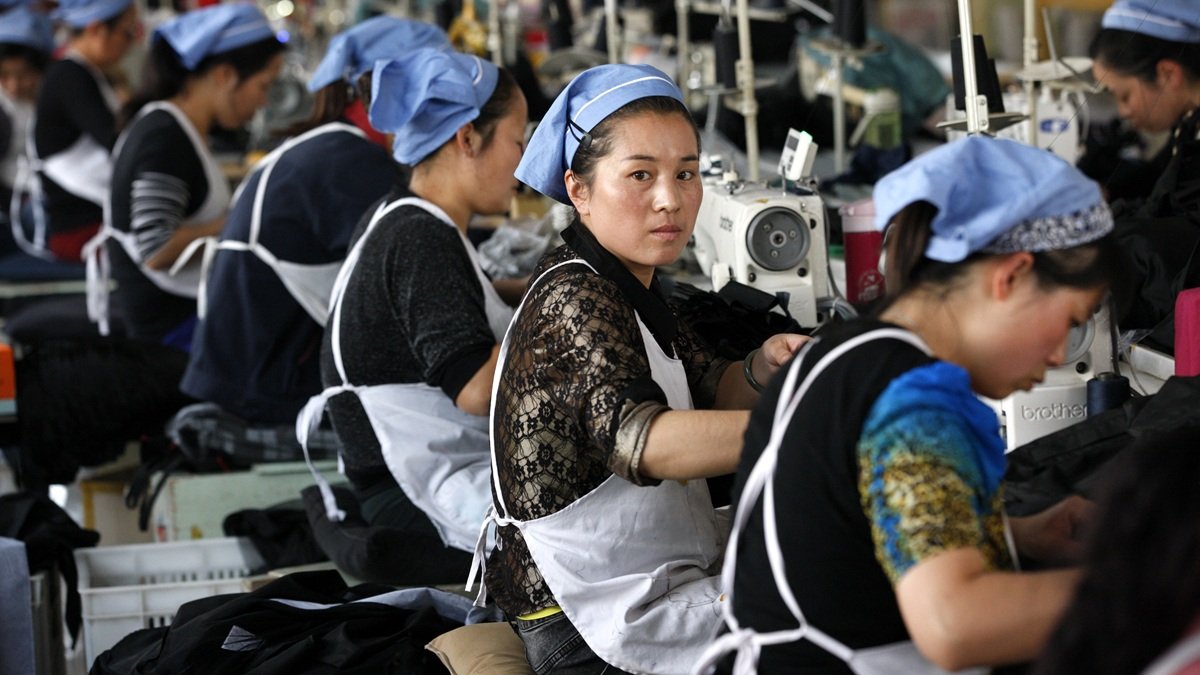The world map of fashion production is being rearranged and, above all, dispersed. After years of rising prices, booming production in close proximity, the blow of the pandemic and the threat of a trade war with the United States, China, the king of global sourcing, is losing weight in world clothing production. For the first time since the liberalization of global trade in 2005, the Asian giant has fallen below 30% share of the world fashion apparel market.
According to data from the World Trade Organization (WTO), contained in the report Key Insights and trends from World Trade Statistics 2024, China accounted for 29.6% of total global apparel exports in the last full fiscal year. Not only that: in 2024, China has been overtaken by the European Union as the world’s largest exporter, with the Western territory accounting for 29.7% of the global share by value.
A year earlier, China’s weight remained above 30%, with 31.6% of the global apparel market. China’s hegemony as the world’s textile factory began to take shape with the liberalization of world textile trade, which led to a massive exodus of production to this market. In 2000, China accounted for 18.2% of the global market, but in 2005 it accounted for 26.6%, a percentage that by 2010 had soared to 36.9%.
For the first time since the liberalization of world textile trade, China’s share has fallen below 30% of the global market
Despite the loss of weight, China regained in 2024 some of the ground lost in 2023, when the world’s ten largest textile producers experienced an across-the-board reduction in exports after the 2022 boom due to the effect of the pandemic shock. In 2024, China exported $165 billion worth of apparel to the world, unchanged from 2023, which contrasts with the 10% decline experienced a year earlier after years of continued year-on-year growth.
Behind China, but far behind in value, Bangladesh is consolidating its position as the world’s second largest apparel exporter. Despite the disruptions caused last year by the so-called Monsoon Revolution, Bangladesh’s exports rose by 7% to $38 billion. This performance also contrasts with that of 2023, when the country reduced its international apparel sales by 21%.
Bangladesh’s share of the global apparel market is also declining, from 7.4% in 2023 to 6.9% in 2024. Whereas in 2000 Bengali exports accounted for 2.6% of the total, in 2010 they accounted for 4.2%, only to skyrocket thereafter, absorbing part of the production that China has been losing.
Vietnam holds the bronze position in the global apparel market, with $34 billion exported in 2024. Vietnamese exports rose by 9% in 2024 (compared with a 12% drop a year earlier) and their weight in the total rose from 6% in 2023 to 6.1% in 2024. From 2010 to 2024, Vietnam has doubled its relevance in the global apparel market.
With exports of $18 billion, Turkey repeats as the fourth most relevant origin. In 2024, the Eurasian country also reduced its relevance in the global market, reducing its weight in global exports by four tenths of a percent to 3.2%.
Despite the boom in local production, Turkey has lost competitiveness in recent years due to high inflation, with the result that the country ended 2024 as the only one of the ten most important countries to have reduced its exports. In the last fiscal year, Turkey’s foreign sales of garments shrank by 4%, following a 6% decline in 2023.
India, on the other hand, closed 2024 by increasing its global exports, although it is also losing weight on the world map of fashion sourcing. With foreign sales of garments worth $16 billion, India accounts for 2.9% of the global market, a drop of one tenth compared to 2023, although it remains the same percentage it has held since 2000. In 2024, India raised its global exports by 6%, after having reduced them by 13% in 2023.
After India, Cambodia, with exports of $10 billion in apparel. The origin did raise its weight in the world market, reaching 1.8% of the total from 1.5% in 2023. With a relevance that has been on the rise over the last decade, Cambodia shot up 24% of its apparel exports in 2024, compared to a 13% drop in 2023, making it the fastest growing origin.
Pakistan slips into the top ten apparel exporters in 2024, a ranking from which Hong Kong drops out this year. The Pakistani market exported fashion worth $9 billion in 2024, accounting for 1.7% of total exports, after rising 15% in the last year.
Bangladesh, Vietnam, Turkey and India are consolidating their position as the other major apparel origins
Indonesia closes the table. The country sold apparel abroad for $9 billion in 2024, up 5% from 2023. The origin accounts for 1.6% of the global apparel market.
The European Union and the United States are also among the world’s top ten apparel exporters by value, although it should be noted that their foreign sales come mainly from the major fashion brands and not from apparel manufacturers, as is the case for the other origins.
In 2024, the European Union overtook China as the world’s largest apparel exporter, with a value of $166 billion, an increase of 2% over 2023 and 29.7% of the world market. The United States, meanwhile, sold $7 billion worth of apparel abroad, down 2% and 3% of the world market.


